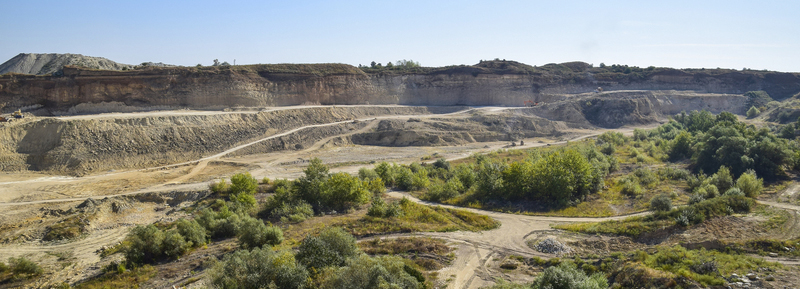On April 6th, the New Jersey Department of Environmental Protection (“NJDEP”) proposed major revisions to the existing Remediation Standards codified at N.J.A.C. 7:26D that may impact current, future and even closed site remediation cases. While the amendments are extensive, below is a summary of the most significant changes:
- Addition and Deletion of Contaminants with Standards – The NJDEP has proposed to add standards for a number of contaminants and to remove others for which NJDEP has determined it did not have supportive toxicology information or that are rarely found in New Jersey. For example, the NJDEP has proposed new soil remediation standards for 15 contaminants that do not have existing standards, including extractable petroleum hydrocarbons (EPH) and 1, 4-dioxane, and removed standards for more than 10 others, including benzo(ghi)perylene and acrolein. Similar additions and deletions are proposed for standards related to certain other contaminant pathways and media.
- Changes in Standards for Existing Contaminants – The NJDEP also has proposed to increase or decrease the existing standards for numerous contaminants. For example, of the 113 contaminants for which there are existing nonresidential soil remediation standards for the ingestion-dermal exposure pathway, as compared to the existing standards, the proposed standards for 13 contaminants are more stringent, 3 are the same, and 90 are less stringent. Notably, the NJDEP has proposed to make standards for some contaminants more stringent by at least an order of magnitude, which would require a re-evaluation, and possibly additional remediation, of those contaminants at certain sites that have received a final remediation document (i.e. NFA or RAO).
- Codification of Impact to Groundwater (IGW) Soil Remediation Standards – Site-specific IGW soil remediation standards are currently established on a case-by-case basis in accordance with NJDEP guidance. The NJDEP has proposed to replace this protocol by codifying soil and soil leachate remediation standards for the migration to groundwater exposure pathway by using the levels contained in the guidance (subject to certain revisions) as the new IGW soil remediation standards.
- Changes to Direct Contact Soil Remediation Standards – The current residential and nonresidential direct contact soil remediation standards take into account both the ingestion-dermal human health criterion and the inhalation human health criterion and set the standard at the more stringent of the two. The proposed amendments would bifurcate the direct contact soil remediation standards into separate soil remediation standards for the ingestion-dermal exposure pathway and the inhalation exposure pathway, which will require remediating parties to individually take into account and address the standards for both of these pathways.
- Codification of Indoor Air Standards – Certain contaminants have the potential to volatilize, migrate through the subsurface as soil gas and infiltrate buildings, which can expose humans to harmful levels of indoor air contamination. Indoor air screening levels are currently set forth in the NJDEP’s vapor intrusion guidance. In order to improve enforceability, the NJDEP has proposed to codify the existing indoor air screening levels list as indoor air remediation standards, subject to a few revisions. Specifically, 1,4-dioxane and 1,2,4-trimethylbenzene will be added to the list and 7 contaminants will be removed because the NJDEP has determined that the methodology it used to establish screening levels for these particular contaminants is no longer valid.
- Expansion of Alternative Remediation Standards Process – While the current rules allow for remediating parties to establish site-specific alternative remediation standards for residential and non-residential soil exposures, the proposal expands the alternative remediation standards process to the soil and soil leachate migration to groundwater (which is the new term for IGW) and vapor intrusion exposure pathways. Accordingly, remediating parties would be able to use this process to establish standards that are less stringent than the default standards for these pathways as well.
- Amendments to Definition of “Residential” and “Nonresidential” – The NJDEP has proposed to amend the existing definitions for “residential use” and “non-residential use” that were used to derive numerical remediation standards based on certain exposure assumptions. The proposed new definitions of “residential” and “nonresidential” as they relate to the remediation standards are based solely on property use – “residential” refers to properties used for residences, private and public schools, charter schools and licensed childcare centers; “nonresidential” refers to properties used for commercial or industrial purposes. This change is intended to help remediating parties more easily identify which set of standards apply to a property.
Stakeholders have criticized the timing of the NJDEP’s rule proposal in the midst of the COVID-19 crisis, citing the difficulty in preparing and submitting public comments. In response, the NJDEP has extended the public comment period by an additional 60 days to August 5, 2020. The NJDEP also noted that if it holds a public hearing on the proposal (the timing of which is uncertain given the COVID-19 situation), it will extend the public comment period until after the hearing.
When the changes to the Remediation Standards are ultimately adopted, a phase-in period will apply to certain ongoing cases. Specifically, those remediating parties that have submitted a remedial action workplan or remedial action report prior to, or less than 6 months after, the operative date of the amendments, may remediate their site using the existing remediation standards. This phase-in period, however, does not apply to remediation of contaminants for which the standard has become more stringent by an order of magnitude as compared to the prior standard.
Given the magnitude of the proposed changes, remediating parties and other stakeholders should review this proposal closely to determine if and how it may impact their current site remediation cases as well as those cases and properties that have already received a final remediation document. Some remediating parties may want to speed up the timing of their investigation and/or remediation to take advantage of the phase-in period (for remediation standards that are proposed to become more stringent), while others may want to delay making final remedial design decisions if standards for certain contaminants at their sites will become less stringent or no longer regulated. In addition, parties conducting pre-purchase due diligence should consider how these changes may affect both legal and contractual liabilities and obligations, including any potential for re-opener issues at formerly remediated sites.
Our attorneys will be closely monitoring the public comment process and ultimate rule adoption to determine how to best assist our clients.
For more information, please contact the author Jaan Haus at jhaus@riker.com or any attorney in our Environmental Practice Group.



